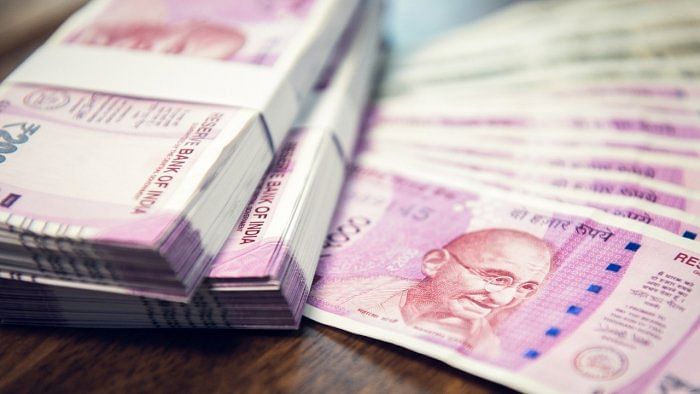
What is the real problem with the Rupee? Is it falling because the Dollar is getting stronger? Or is Putin’s war on Ukraine the culprit?
Some would argue that the Rupee is struggling because of our dependence on crude oil imports, and with increased costs and uncertainties on oil supply, the situation is becoming grim.
Others would point to the relatively poor performance of our export sector and that with rising imports, the consequent current account deficit puts a burden on the Rupee and pushes down its value.
There is also the familiar villain, the Foreign Portfolio/Institutional Investor who has withdrawn upwards of $30 billion from the Indian equity market this year.
And there is, of course, the US Federal Reserve, that has increased interest rates and ensured that dollars flow back to the US banking system.
The answer, in all fairness, is, all of the above.
The Indian economy, struggling with high supply side push to inflation, has been growing far below its potential for some years now. Growth rates had fallen even before the Covid-19 pandemic, and the sudden, harsh lockdown caused great destruction. The decline in growth rates can, in fact, be traced back to the November 2016 decision to demonetise higher currency notes. The existing Rs 500 and Rs 1,000 currency notes were banned with a sudden four-hour notice – taking the lifeblood out of the economy for weeks and months on end as 86% of the currency in circulation (by value) was withdrawn (only to be replaced by new Rs 500 and an even bigger Rs 2,000 note!).
The resulting shock to the economy is still being felt as most of the MSME and the export sector got derailed, leading to unprecedented unemployment on account of the former and a burgeoning trade deficit on account of the latter. In simple terms, therefore, the value of the Rupee is falling because the demand for the Rupee is sliding while that for the Dollar is rising.
How does this impact the economy then? As the Dollar becomes stronger, imports become more expensive. Crude oil price, which is already on its way up because of the war in Ukraine, becomes even more expensive as the Rupee falls. While crude oil is our biggest import, other items like edible oils and active pharmaceutical ingredients (APIs) become dearer, too, leading to an increase in the cost of food items, drugs and medicines, etc. For industries that depend on imports of machinery, machine tools, boilers, etc., profitability suffers and the impact on the stock market is significant.
On the flip side, exports become cheaper and should, in such circumstances, actually improve. However, the problem we are facing is that the export sector, already burdened with the impact of GST and demonetisation, is now facing an uncertain global market that is importing less as consumption falls almost everywhere across the world.
Our exports are also no longer as competitive as earlier as inflation, and therefore rising input costs, is forcing prices up. The lockdown also has disrupted local and international supply chains, along with displacing large amounts of migrant labour. Export units are yet to emerge from these challenges.
Given this scenario, is it really a problem if the Rupee is falling? In a pure economic sense, the price of the Rupee, when left alone, will settle at an equilibrium that reflects the supply and demand situation for the currency. Therefore, if the current trends are anything to go by, the Rupee should continue to fall, and settle at around 85 to a Dollar if the ‘Real Effective Exchange Rate’ calculations are robust. It is, and further will be, one of weakest currencies at present, with a sharper fall against the Dollar than the Chinese Yuan.
However, this equilibrium will then stabilise the value and allow businesses and governments to recalibrate their forecasts accordingly. The situation is not dire as far as the Indian economy is concerned, even if it is becoming more fragile by the day.
Now, both the large private sector enterprises and the government are suffering as they are both large importers, paying so much more for the same volume that they were importing last year. Allowing the Rupee to fall will also arrest the steady decline in foreign exchange reserves that are being depleted as the Reserve Bank of India intervenes to protect the Rupee from falling further. More than $50 billion have already been spent to protect the Rupee from a free fall.
There is bound to be some more impact on prices and inflation will go up steadily but can be controlled with some hikes in repo (interest) rates and a conservative monetary policy on cash reserves and liquidity ratios. The RBI has indeed taken some steps, a tad too late perhaps, but must do more on the monetary policy front than through open market operations where dollars are sold to increase supply and bring down the exchange rate.
The real problem is, however, that of perception, and of the unreasonable claims that were made in 2013 and 2014. It is not so much the falling Rupee on account of external factors like war that is creating ripples in India. It is the fact that when the Rupee was similarly falling eight years ago, the then Opposition leaders had caricatured the then Prime Minister Manmohan Singh as the ‘weakest Prime Minister ever’ causing the Rupee to weaken.
Everyone who knew, or did not know, anything about exchange rates got into the fray. Godmen, film actors, news anchors, et al, had a field day lampooning Manmohan Singh for India’s precarious position. What was worse was that some bitter critics of the UPA government, who are now acolytes of the current ruling party and establishment, had claimed then that a new government under a “strong leader” would propel the Rupee to a glorious position. Such grandstanding then is what is coming back to hurt the establishment now. The chickens have come home to roost.